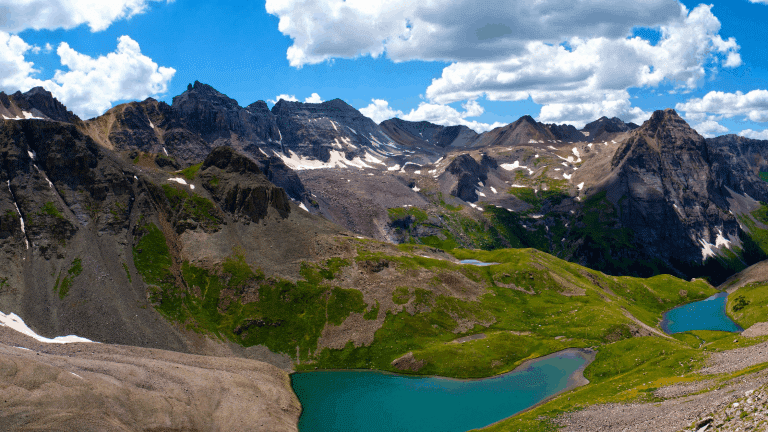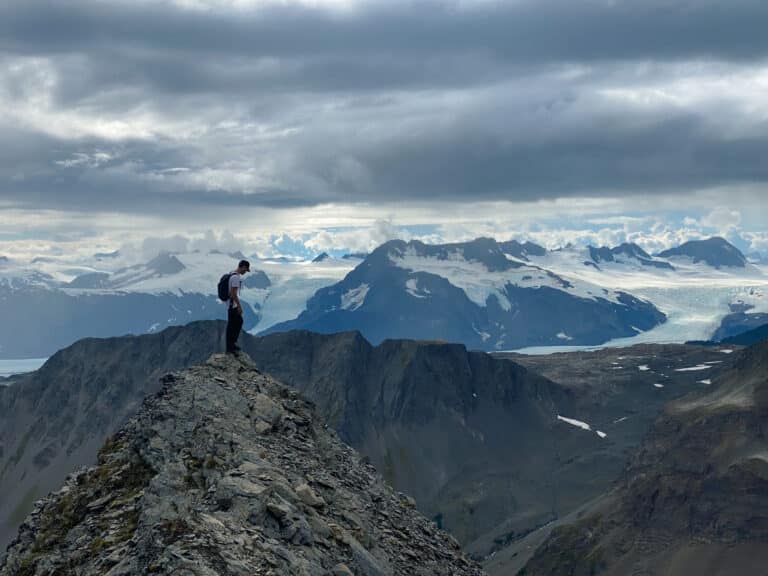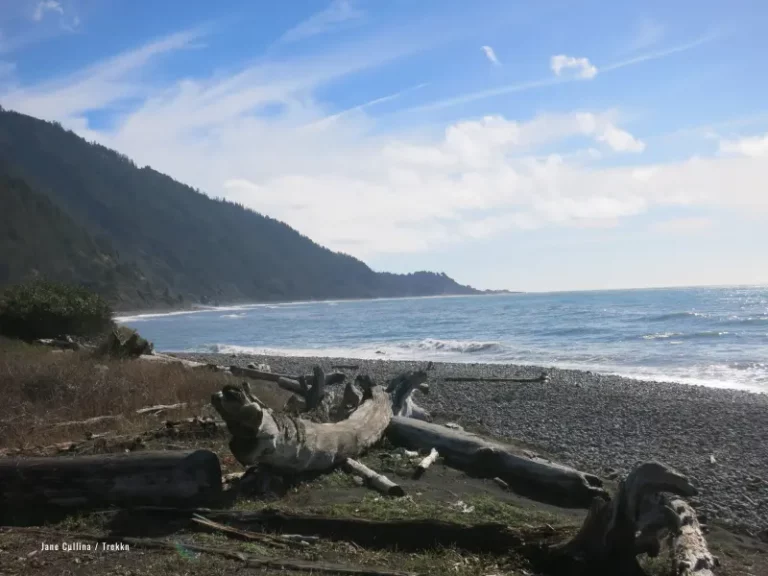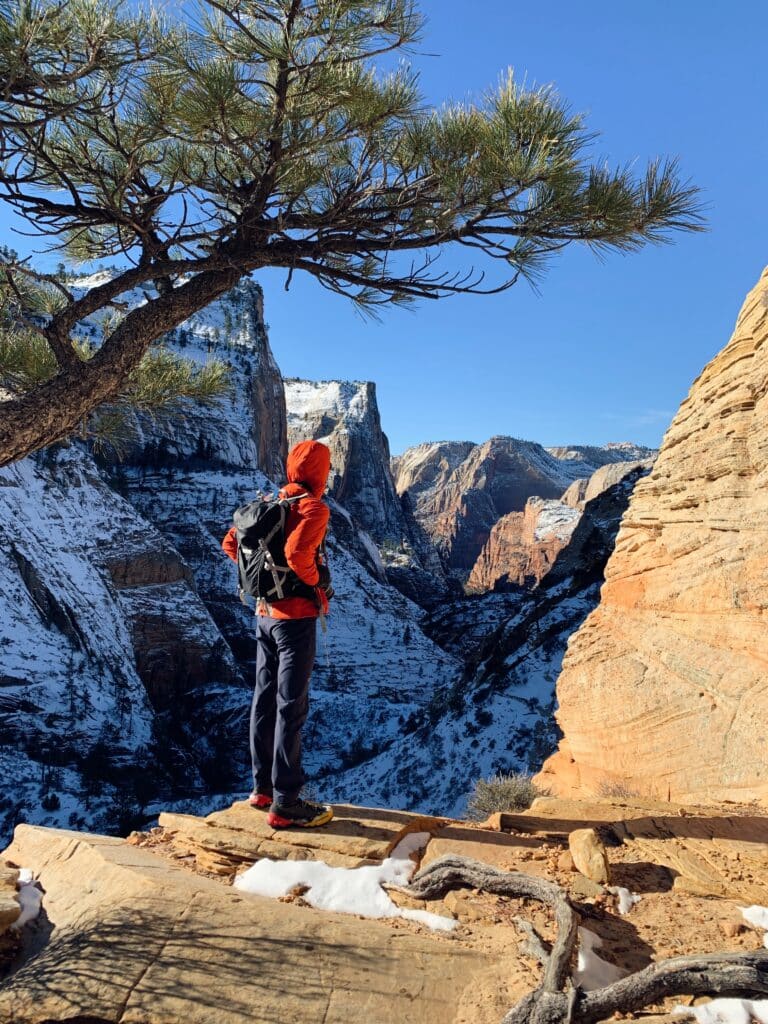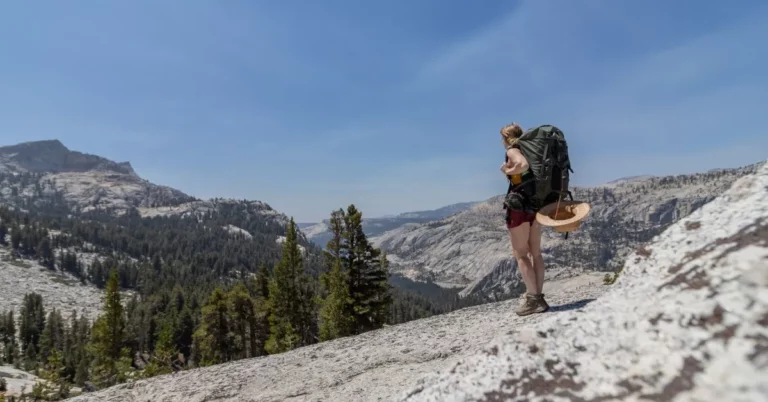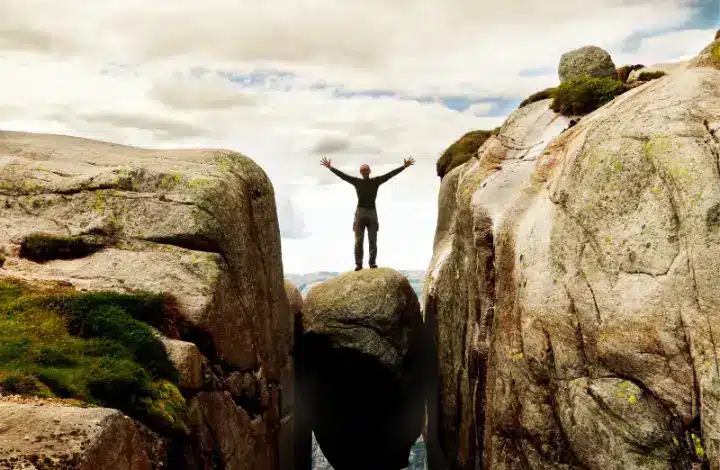Hiking the Lost Lake Trail in Seward, Alaska
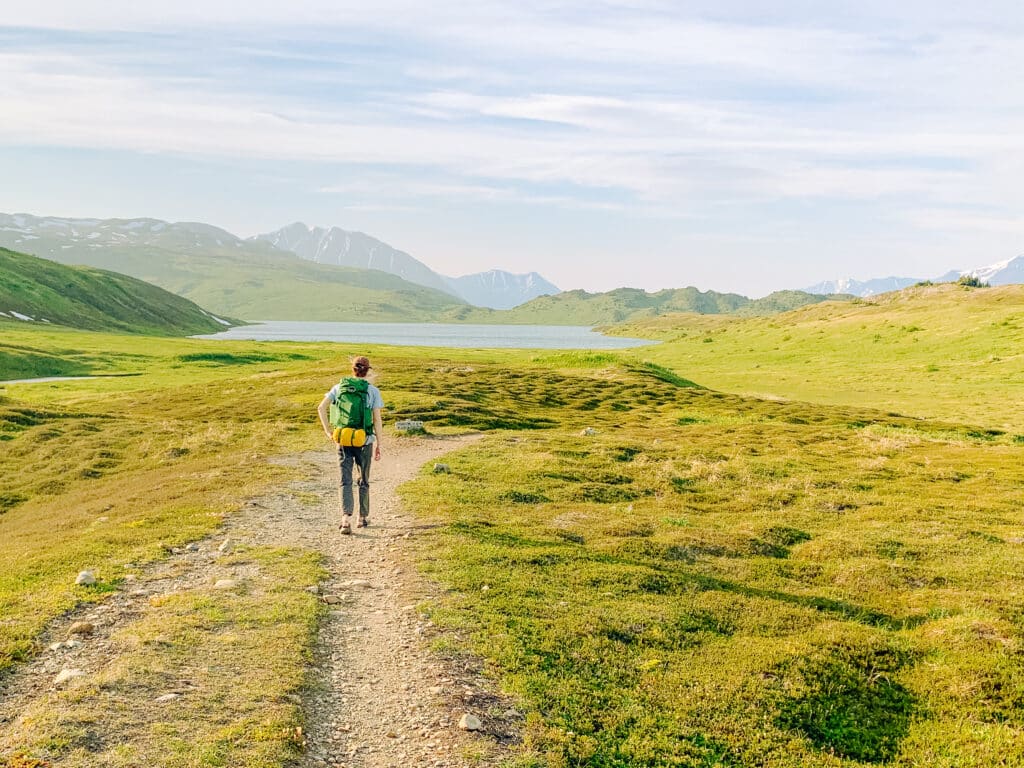
If you’ve heard anything about hiking on Alaska’s Kenai Peninsula, chances are you’ve heard about the famed Lost Lake Trail in Seward. Often regarded as one of the best trails near Seward, and even on the entire peninsula, the Lost Lake Trail provides an awe-inspiring experience for every individual that sets foot on the path.
If you’re planning a visit to Seward, my hope is that you are also planning a hike on the Lost Lake Trail. If that’s the case, you’re in the right spot! As a Seward local, I’ve been fortunate enough to hike this trail quite a few times. In the article below, you’ll find a guide for hiking the Lost Lake Trail in Seward.
My hope is for you to feel confident (and excited!) about your trip to Lost Lake after gathering all the info you need from this write-up.
Be prepared to pick your jaw up from the floor; it’s time to take a look at the Lost Lake Trail!
A Local’s Guide to Hiking the Lost Lake Trail in Seward, Alaska
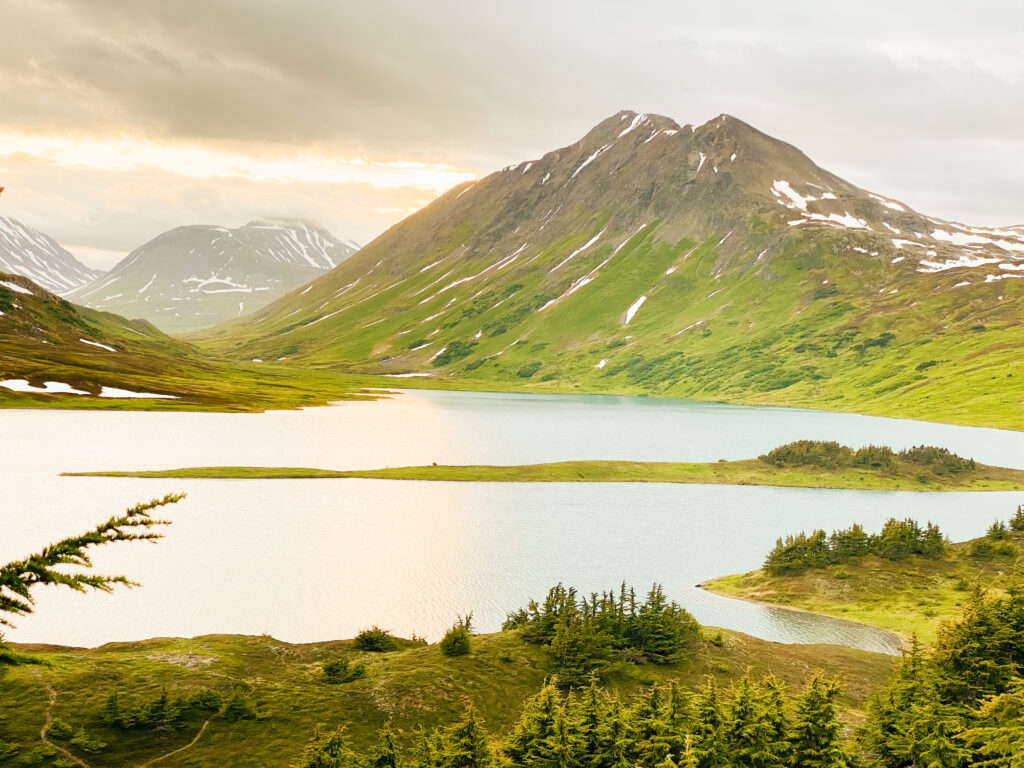
Overview of the Lost Lake Trail
Distance: Approximately 14.5 miles
Elevation Gain: ~ 2,600 feet
Difficulty: Moderate
Time to Complete: 6 – 8 hours as a day trip, 1 night as a backpacking trip
Traffic: Fairly heavily trafficked
Popular Activities: Hiking, Backpacking, Mountain Biking, Snowshoeing, Snowmobiling
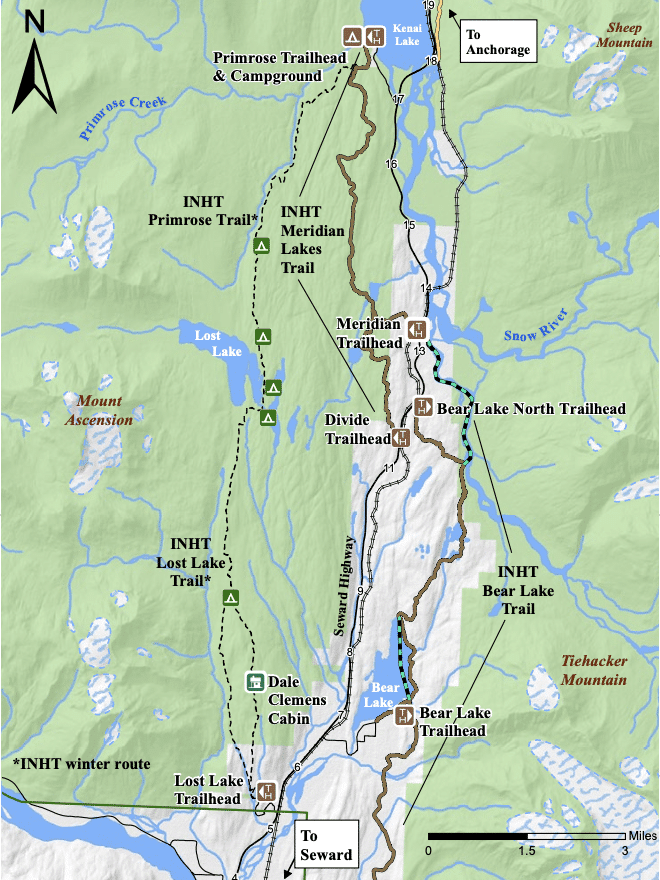
Trailhead Location
The ultimate destination, Lost Lake itself, can actually be reached via two different trailheads: Lost Lake Trailhead and Primrose Trailhead.
Lost Lake Trailhead
The more popular of the two trailheads is aptly called the Lost Lake Trailhead (or Bear Creek Trailhead).
From Seward’s small boat harbor, the Lost Lake Trailhead can be found about 5 miles north.
Taking the Seward Highway, drive north until you spot a left turn for Scott Way. After turning, the road will fork, and you want to keep left. The road will become Heather Lee Lane.
Continue on Heather Lee Lane for a short time, and soon you will reach Hayden Lane on the right. Take the turn, and before long you will see the parking lot for the Lost Lake Trailhead.
Luckily, the Lost Lake Trailhead has a fairly large parking lot. Besides on the busiest days during the summer, you shouldn’t have any issues finding a parking spot. The lot is also free! (Just make sure to not overstay your welcome)
Primrose Trailhead
The second option for reaching Lost Lake is via the Primrose Trail.
Starting from Seward’s small boat harbor, the Primrose Trailhead is located about 17 miles north along the highway.
Taking the Seward Highway, drive north until you see the left turn for Primrose Spur Rd. This turnoff is located right before the bridge crossing over Kenai Lake tributary, so if you find yourself on the bridge, you’ve gone too far.
After turning left, the road will take you all the way to the Primrose Campground. Park in the spots located before the entrance to the campground, and then take a short stroll through the campground all the way to the trailhead.
Unless you are camping in the campground, parking is also free on this side of the trail.
Lost Lake Trail vs. Primrose Trail
When I first arrived in Seward and began researching the hike to Lost Lake, I was a bit confused about the whole Lost Lake Trail versus Primrose Trail thing. I wanted to make sure I made the best choice for my wants and needs.
Is one better than the other? Is it worth experiencing both sides of the trail? Here’s the rundown:
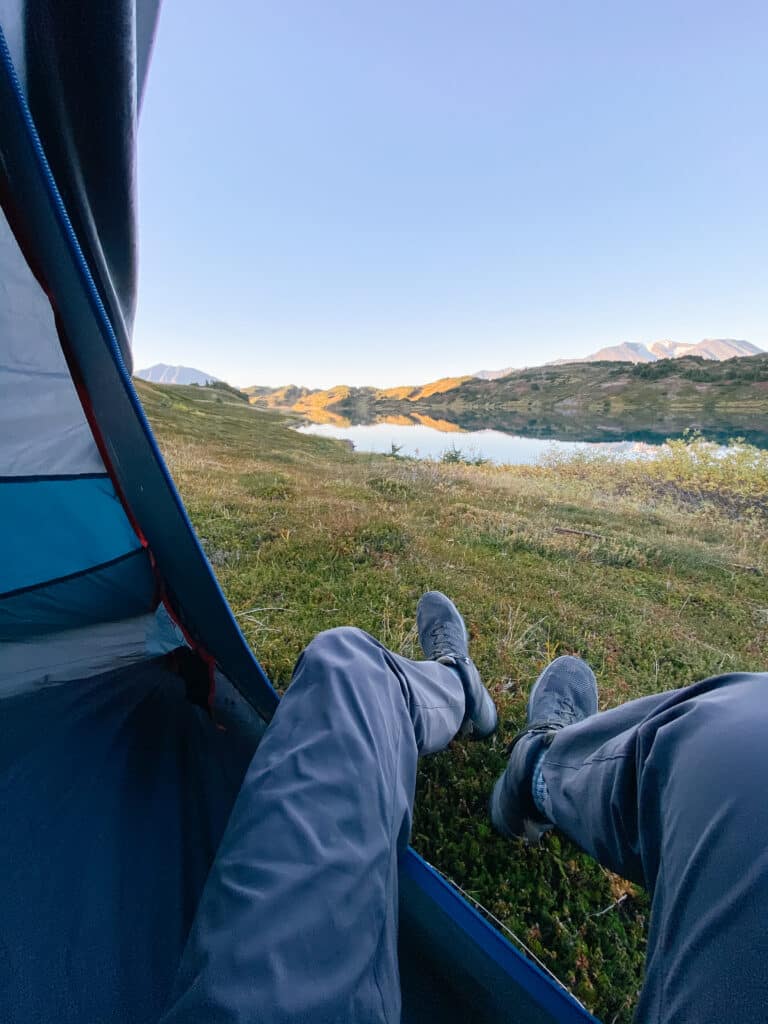
Hiking via the Lost Lake Trail
Summer vs. Winter Trail
As mentioned above, the Lost Lake Trail is the more popular option for most activities. There are two different trail options that sprout from the Lost Lake Trailhead: the Summer and Winter Trails.
The two trails eventually meet up at around the 5-mile point, intersecting about a mile before a view of the lake presents itself. However, if you are trekking in the summertime, taking the Summer Trail is without a doubt the better option.
The Winter Trail is a bit more difficult than its Summer counterpart, with a steeper grade and many more obstacles such as roots and rocks covering the trail. With a blanket of snow concealing most of these obstacles, the Winter route becomes much more viable for the eager adventurer (hence, “Winter Trail”).
Sitka Spruce Forest
Starting from the Lost Lake Trailhead, the trail begins as a couple of switchbacks, leading you through a dense forest of Sitka spruce trees. The grade of the trail through this forest is moderate.
The first two miles of forested trail grant you about 1,000 feet of elevation gain, steadily winding past thickets of the plentiful understory shrub Devil’s Club.
Keep an eye out for berries on this section of the trail as well! If you time it right, blueberries and salmonberries are bountiful and ripe for the pickin’.
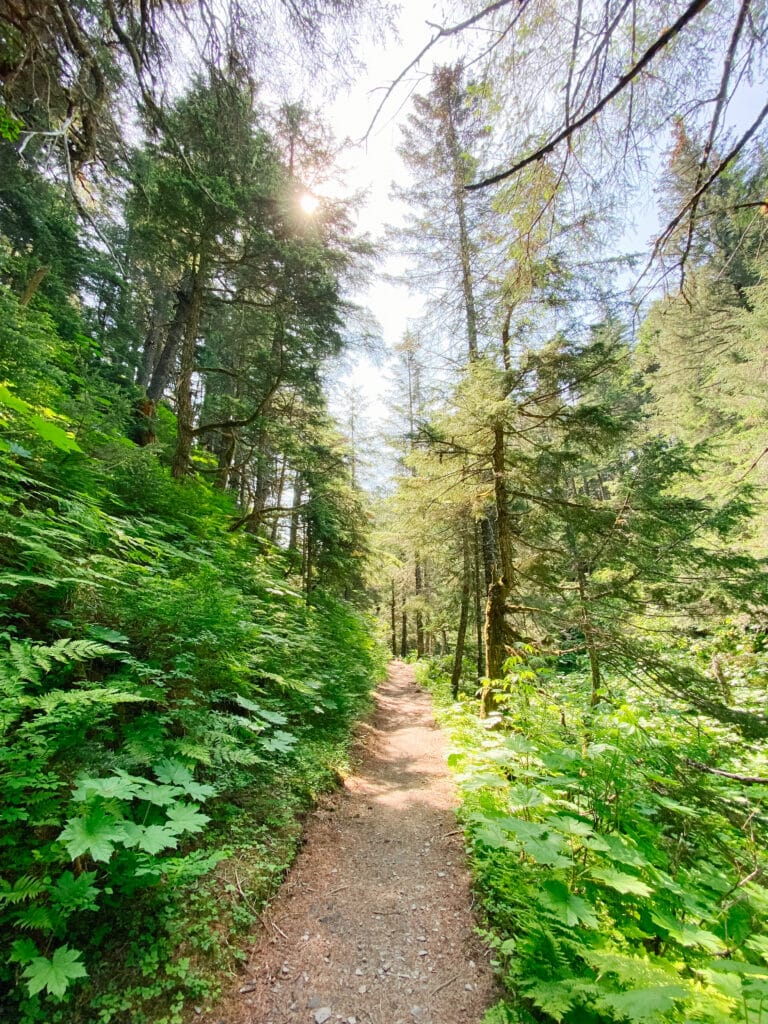
Mountainside Trekking
After you have (hopefully) satisfied your berry harvesting desires, the trail begins to open up. No longer entirely enveloped by spruce trees, the trail takes you along an exposed mountainside, which allows you to view the spectacular Box Canyon to the west.
At home in the bottom of the canyon is a creek; the steady white noise of the rushing waters can be heard echoing within the 500 feet deep gorge.
The path gradually climbs parallel to the canyon, continuing northward through lush brush and green grasses. The views only get better as the distance is traversed.
Taking a moment to look around reveals nearly 360 degrees of snow-capped mountains and merging ravines. At this elevation Resurrection Bay is visible to the south, stretching as far as the eye can see as it integrates into the Gulf of Alaska.
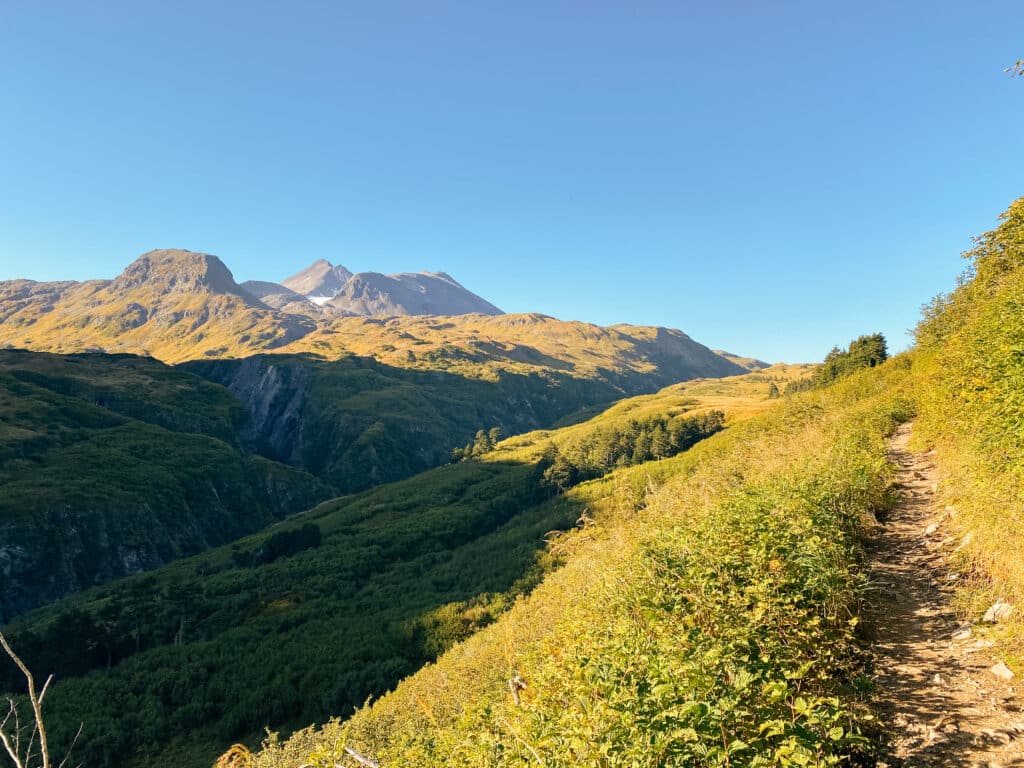

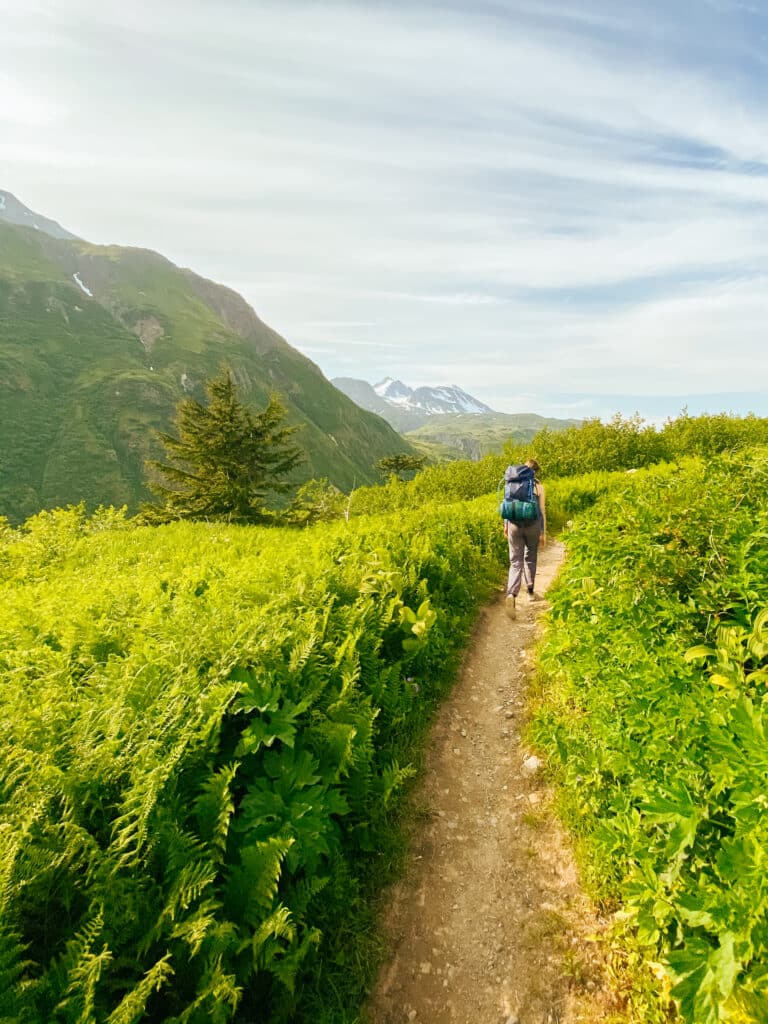
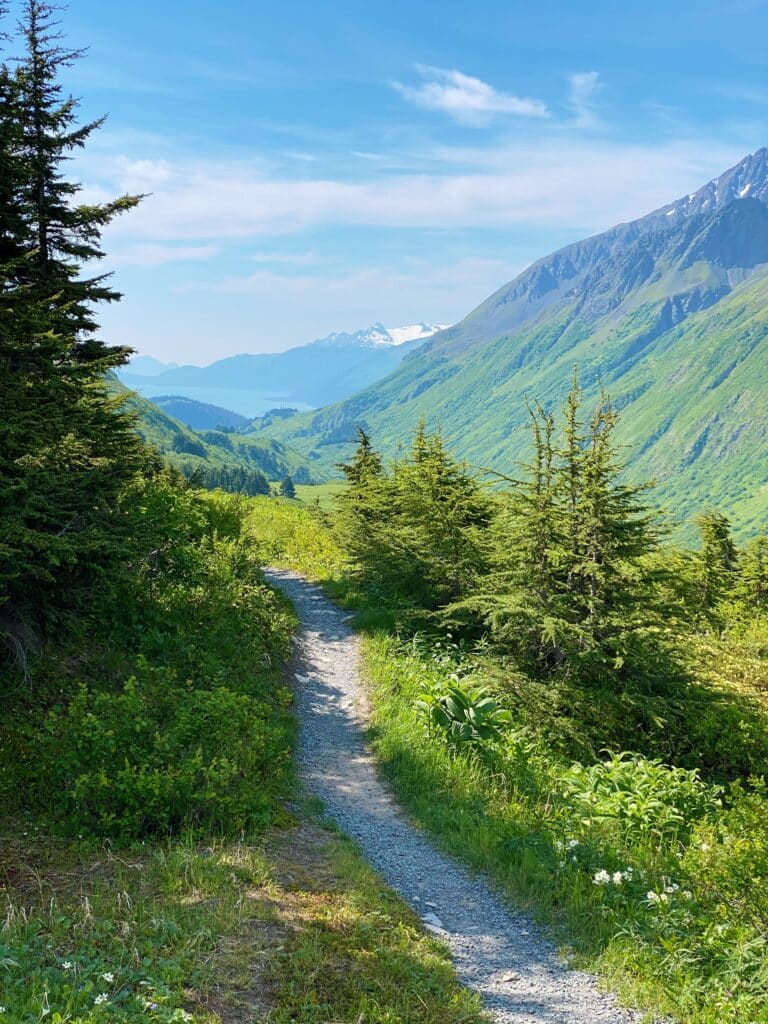
Rolling Meadows
Around the 3.5 mile mark, the Summer Trail meets the Winter Trail. This is also the point where the trail begins to level out for a little while.
The next mile of trail will have you winding your way through sparse tree coverage. I find that this is an optimal spot to stop for a snack; the shade is a welcome haven on a hot, sunny day.
Wildflowers are abundant throughout this area as well. Keep your eyes open for wandering fleabanes, chocolate lilies, bluebells-of-Scotland, and Nootka lupine. The display of color is easy to get lost in.
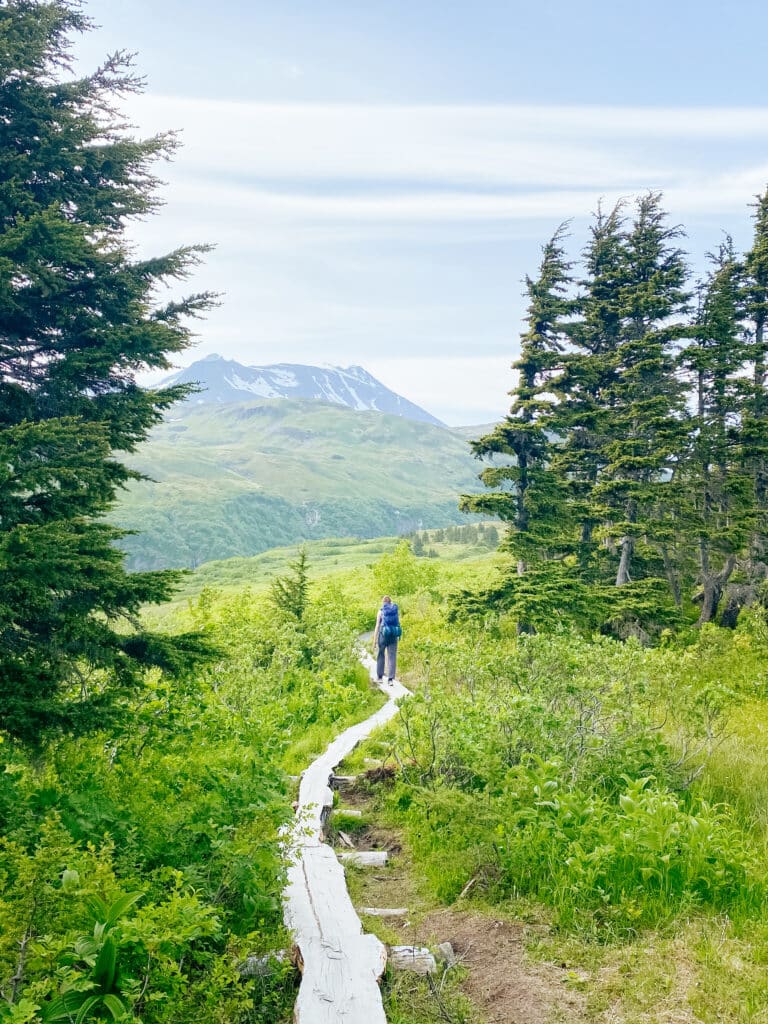
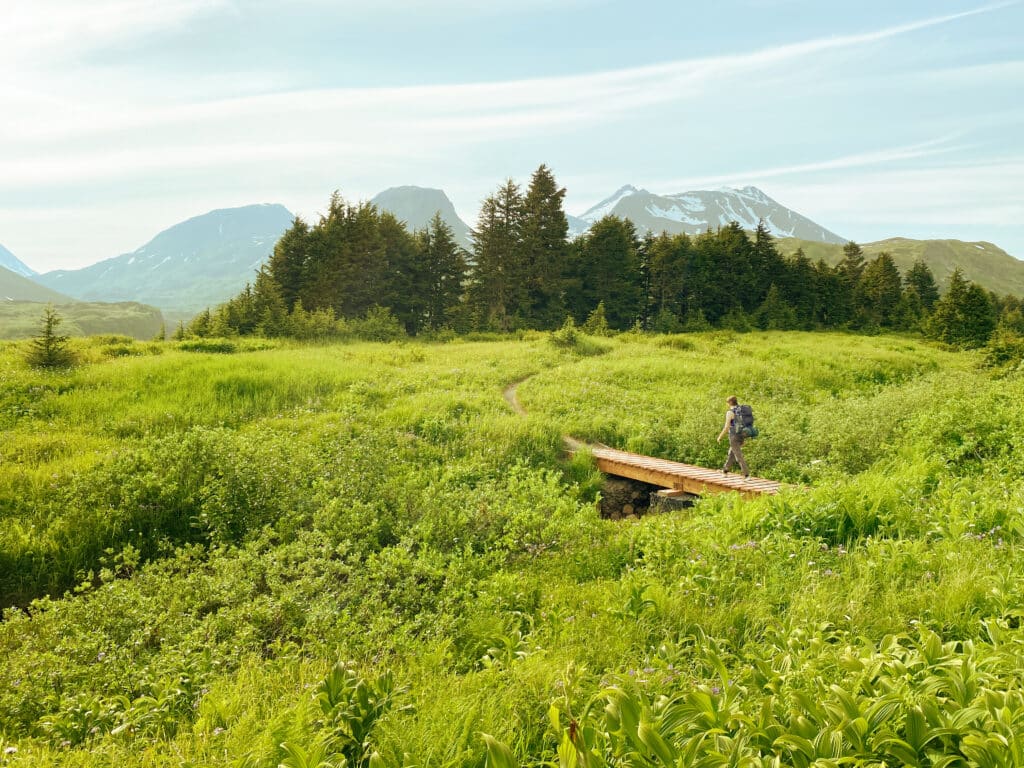
For the next mile, you will have the opportunity to enjoy some beautiful rolling meadows. The wide-open landscape lets you see for miles; take a moment to spot all of the glaciers nestled in the Kenai mountains.
It is at this point that you may understand why the Lost Lake Trail in Seward is so highly regarded.
Make sure not to rush this section; take your time looking in every direction, snapping pictures of the beautiful views.
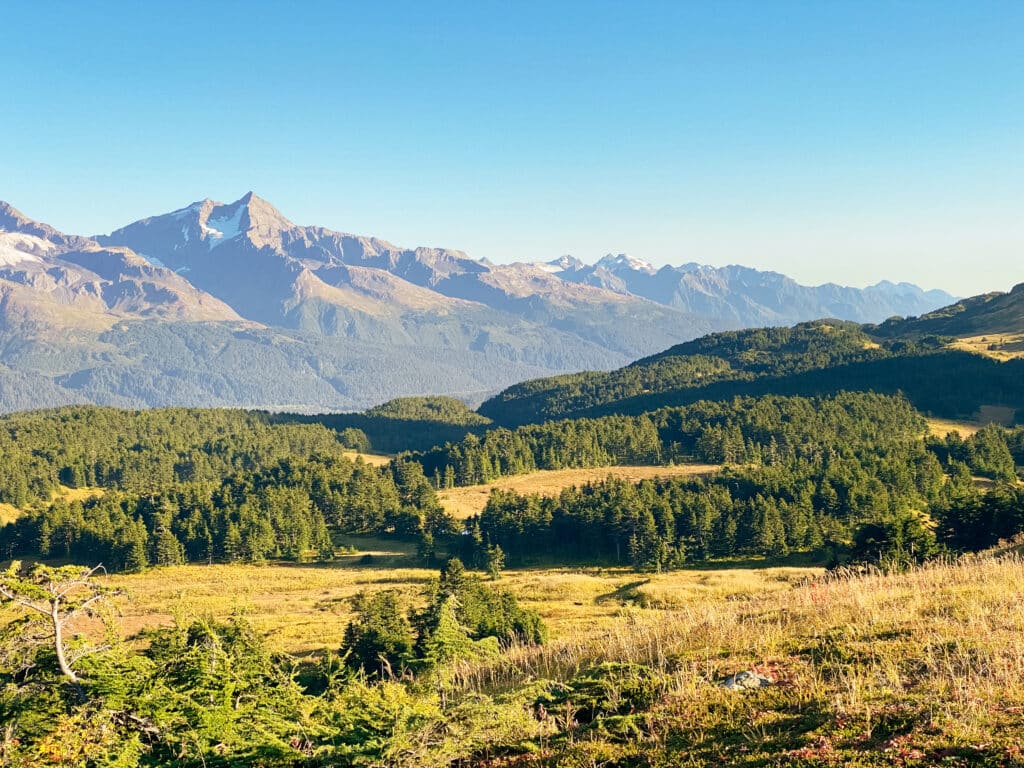
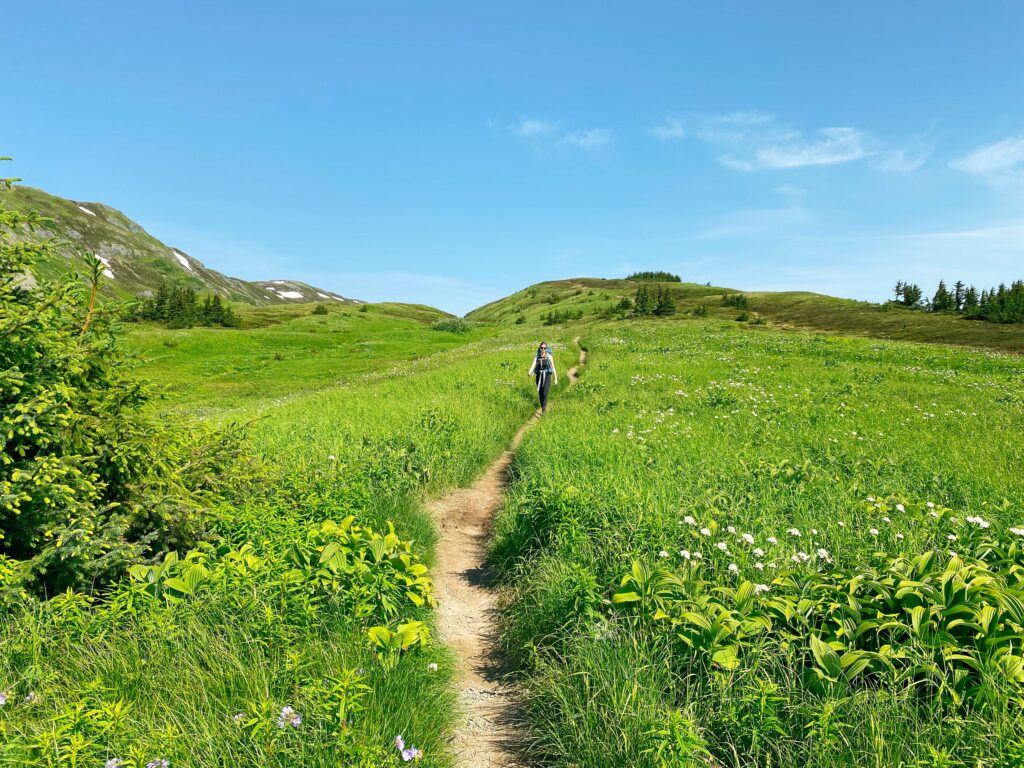
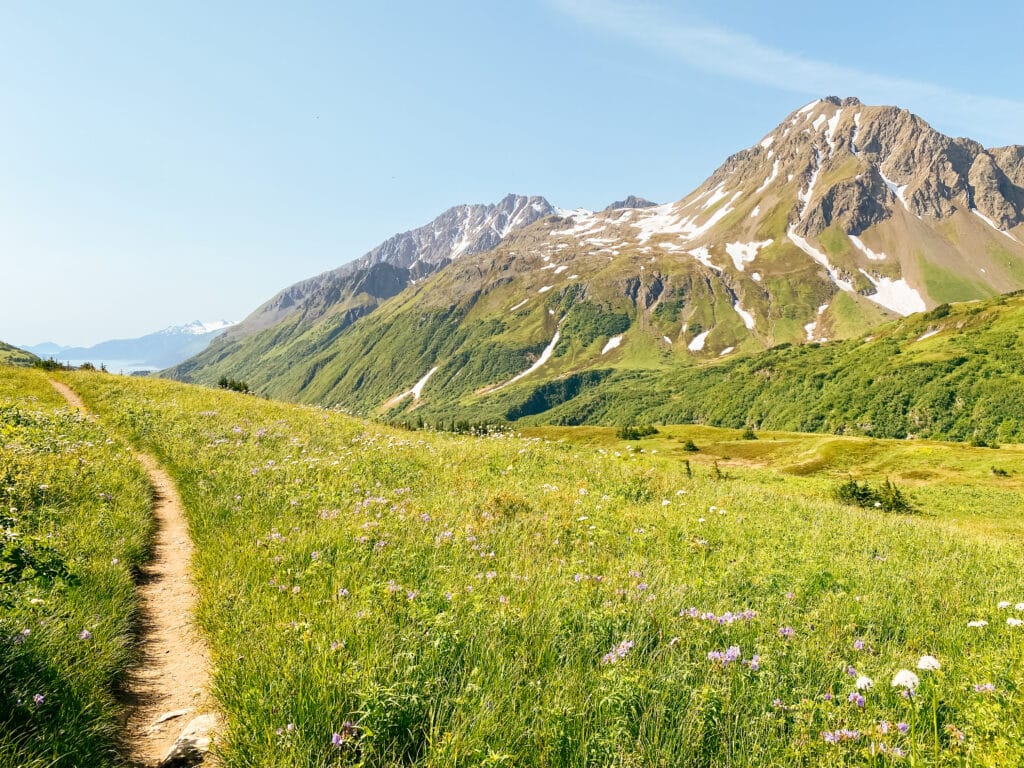
Finding Lost Lake
The trail steadily brings you higher and higher until you crest the final hill. Lost Lake will be revealed before you, standing a little over a mile away. As you get closer to the lake, a fork in the trail appears.
The left trail will take you to the southern shores of Lost Lake, while the right trail marks the “start” of the Primrose Trail, which wraps around the east side of the lake.
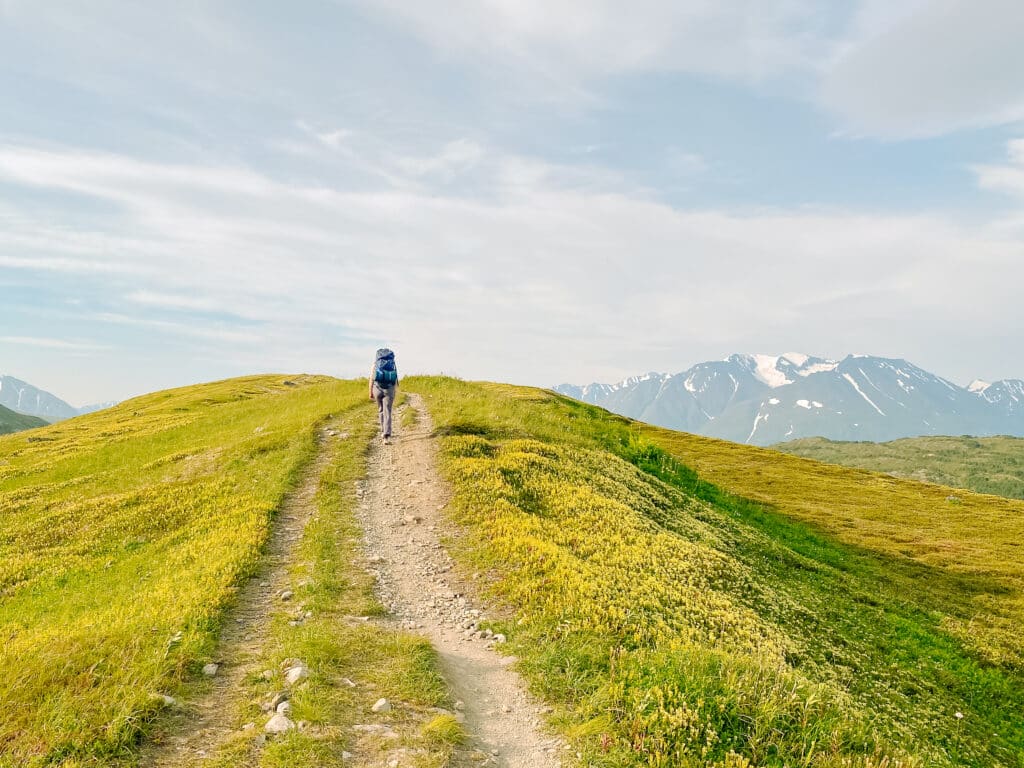
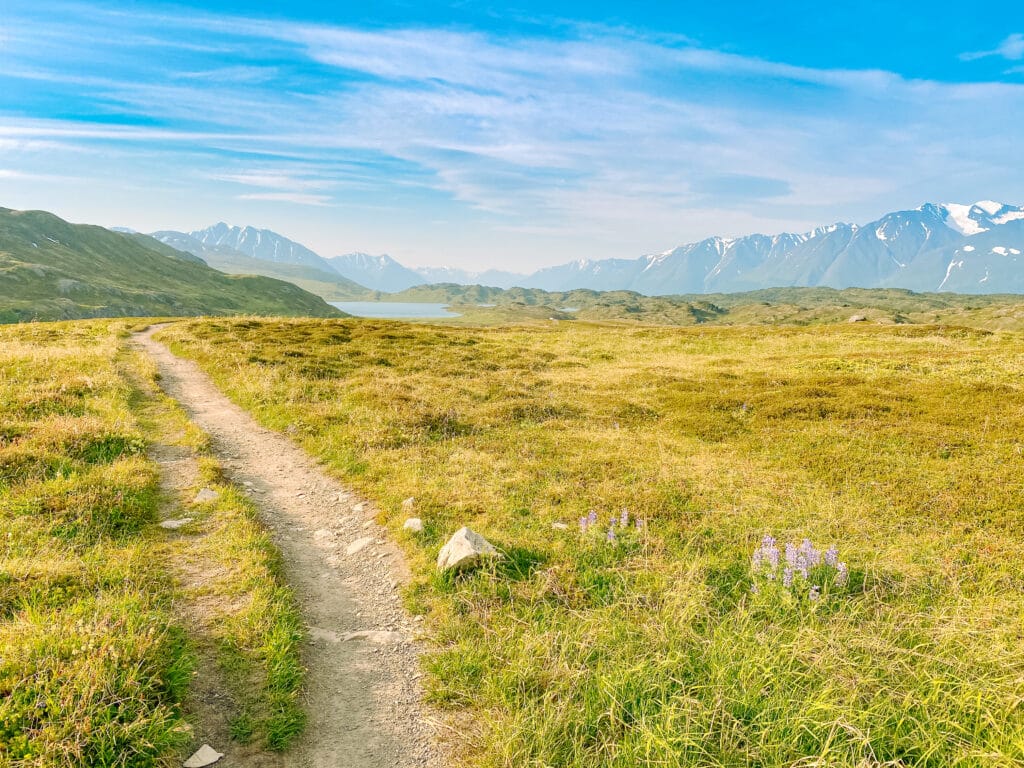
This is typically the point at which I begin searching for a place to set up camp.
The waters of Lost Lake are spectacular in every way: crystal clear, teal from a distance, and frigid cold for brave souls to take a plunge.
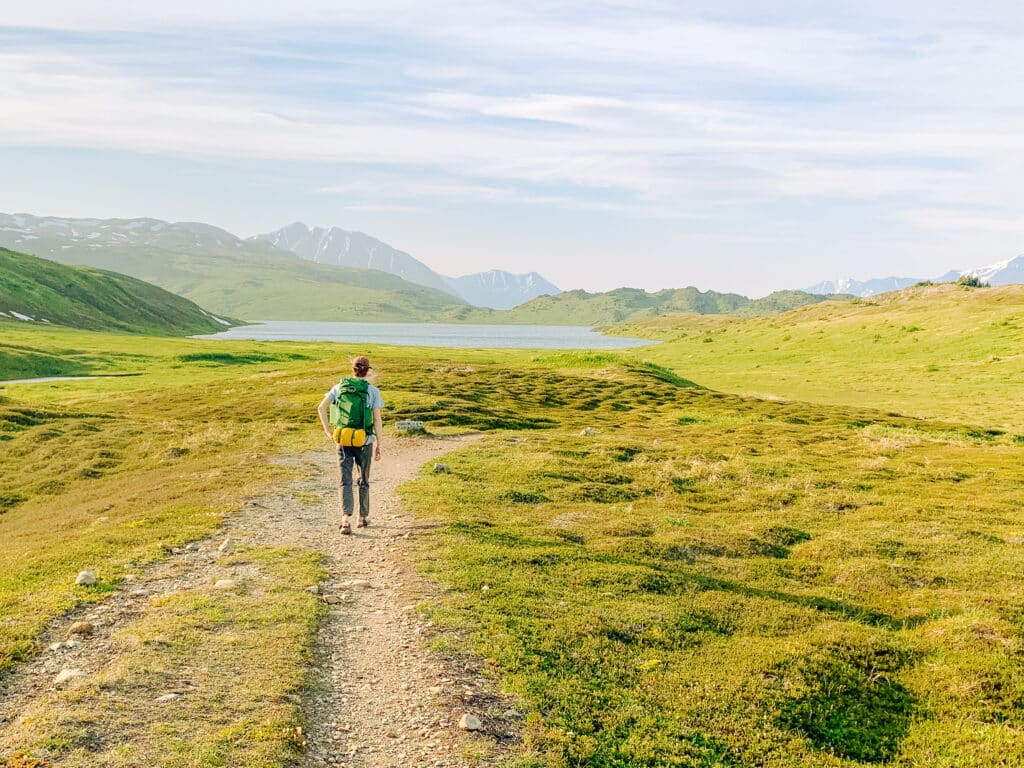
Hiking via the Primrose Trail
Starting on the Primrose side offers an experience that is quite different than the Lost Lake (Bear Creek) side. Let’s walk through what to expect on the Primrose Trail.
Hemlock Forest
The start of the Primrose Trail leads you through a dense hemlock forest. The trail here is wide and flat, easily accessible to most modes of transportation. The views here aren’t anything special.
Most of your vision is filled with towering hemlocks, roots underfoot, and the occasional interesting flower or fungi.
Around half a mile into the hike, a section of the historic Iditarod Trail intersects the Primrose Trail. Keeping left at the fork will put you on the Iditarod-Meridian Lakes Trail, which eventually leads you to Long Lake.
Continuing forward on the Primrose Trail will lead you through more hemlock forest.
Porcupine (Primrose) Falls
Around 2 miles into the hike, an unmarked, unmaintained spur trail leads you to an overlook of Porcupine (Primrose) Falls. These falls are impressively large and well worth the 15-minute detour.
Listen for the loud rumble of rushing water. After crossing a short bridge over a creek, the turnoff for the trail will soon come up on the righthand side.
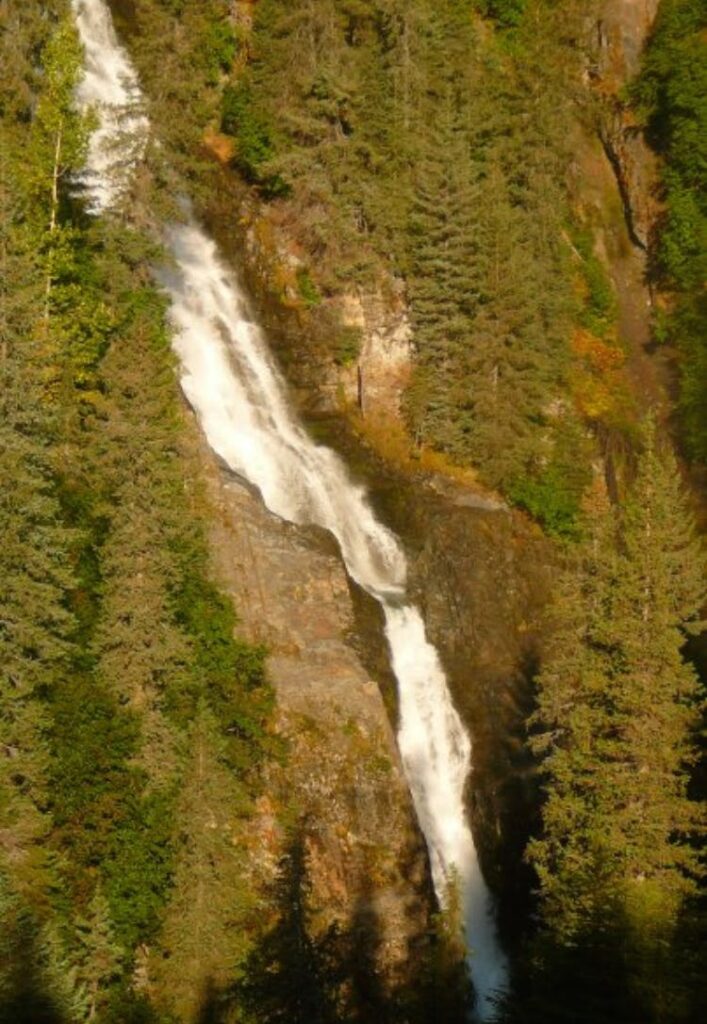
Hemlock Forest… continued
Most of this trail is swaddled in the safety of the hemlocks. The first 5 miles of this trail don’t offer much diversity at all, especially compared to the Lost Lake Trailside.
Another factor that differentiates the Primrose Trail from the Lost Lake Trail is the difficulty. From my experiences on both trails, I believe the Primrose side to be the more difficult one.
The elevation gain on both trails is very similar, but the Primrose trail occasionally has very steep sections. The Lost Lake Trail takes a more relaxed approach to climb in elevation, while the Primrose Trail is more erratic with the grade of the trail.
If you would rather have a steady climb that maintains a steepness (more or less) throughout the whole trail, the Lost Lake side might be better for you.
The Primrose Trail can be more difficult, yet doesn’t offer consistently amazing views throughout the first part of the trail. Don’t get me wrong though, there are still some amazing views to be seen when the occasional break in the trees reveals the landscape.
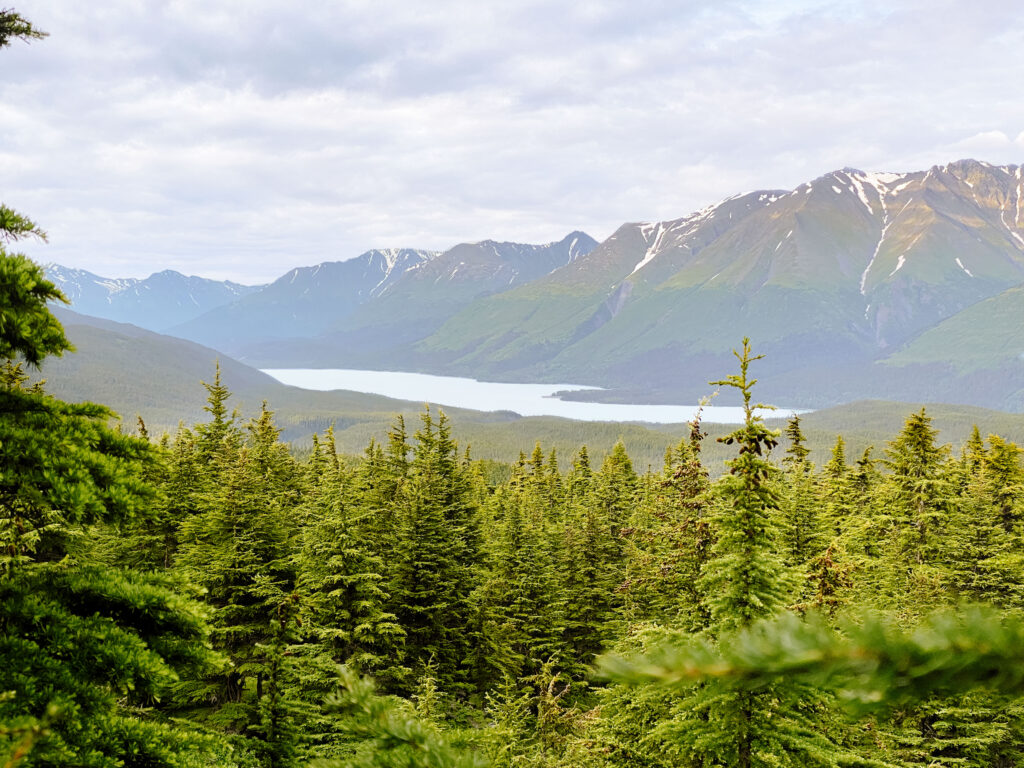
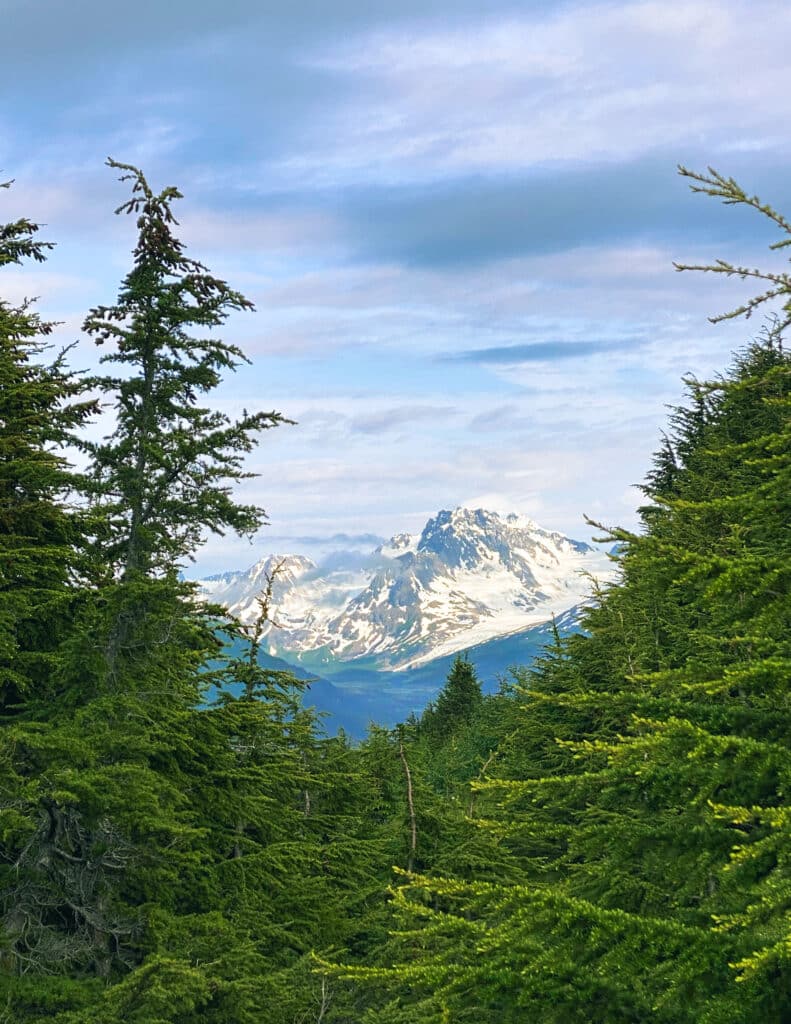
Emerging from the Trees
Finally, after staring down at your feet for hours, the tree cover subsides. In the haze of “trail vision”, the rolling hills covered in vivid green plant life can appear dream-like. It’s a welcome interruption to the monotony.
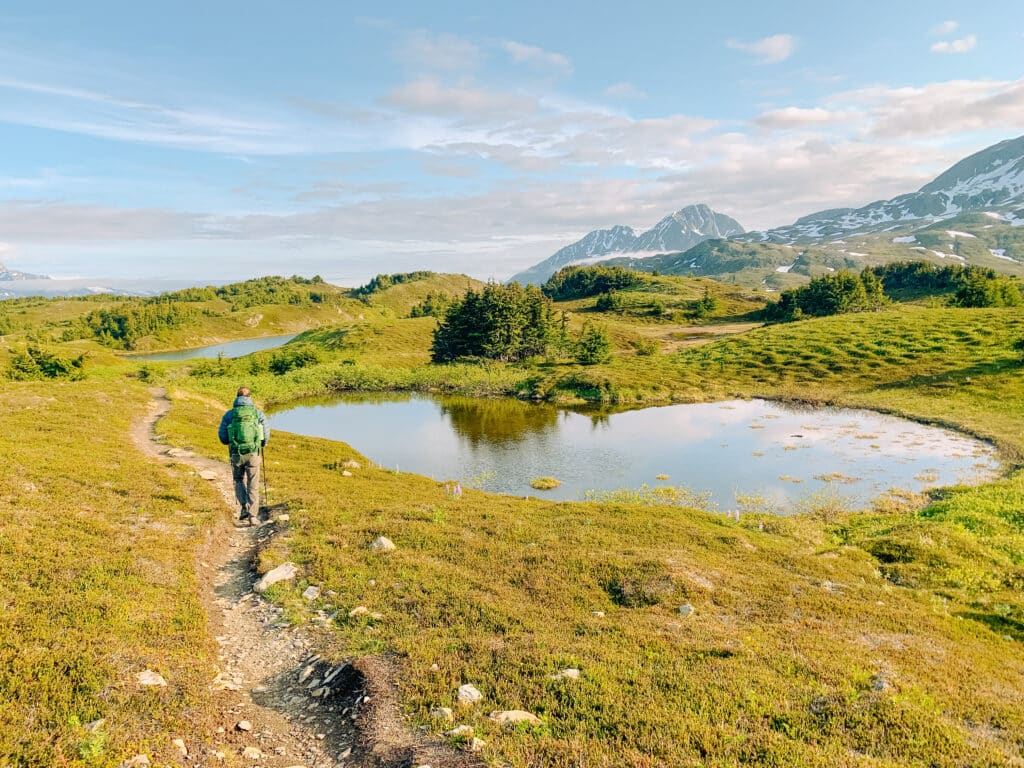
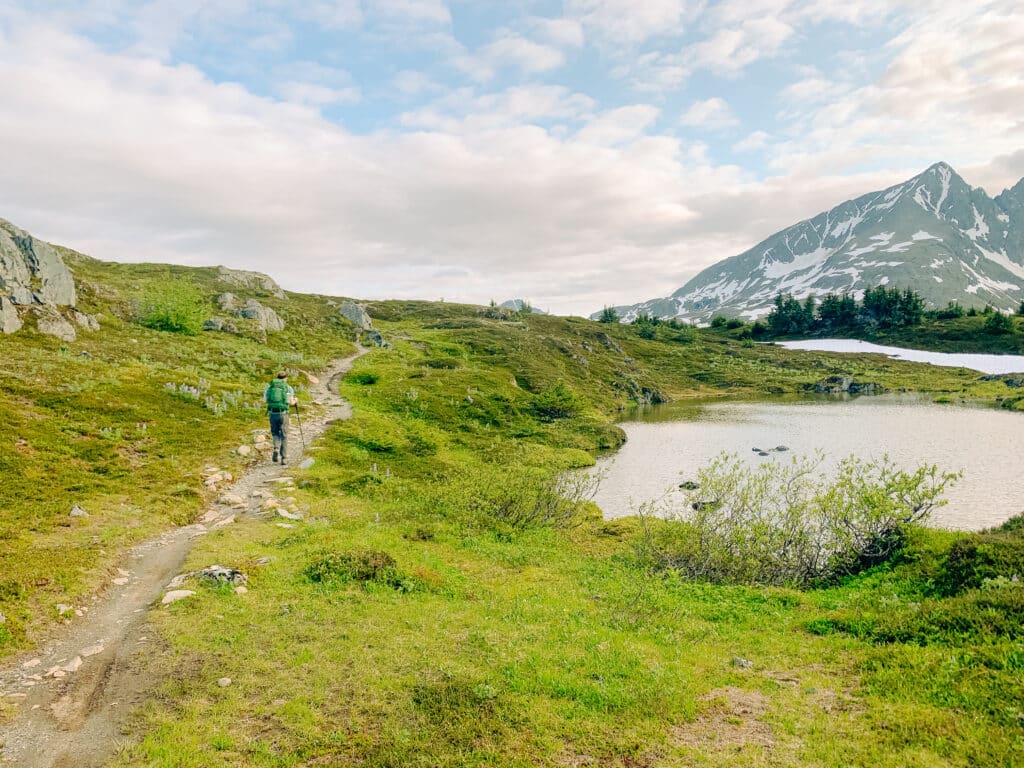
This section of the trail has an abundance of ponds, dramatic views of the surrounding mountains, and lush vegetation. Assuming you haven’t stopped for pictures too often in the first 5 miles, the next mile and a half will have you stopping, staring, and snapping photos nonstop. You have entered an alpine wonderland.
Off in the distance, Mt. Ascension rises stoically. This two-peak mountain can easily be seen from both the Primrose and Lost Lake Trails, but I prefer the views offered via the Primrose Trail.
The base of this mountain forms the western edge of Lost Lake itself. If you’re lucky, you may spot some mountaineers and skiers on the slopes of Mt. Ascension. It is a popular spring/early summer backcountry skiing option.
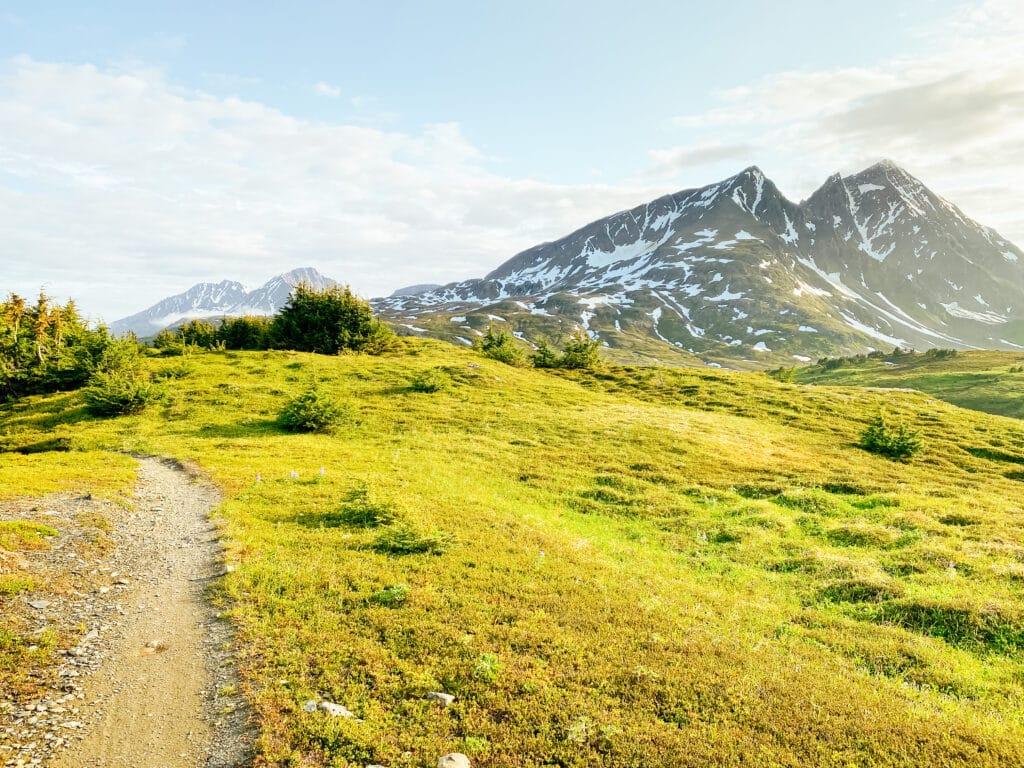
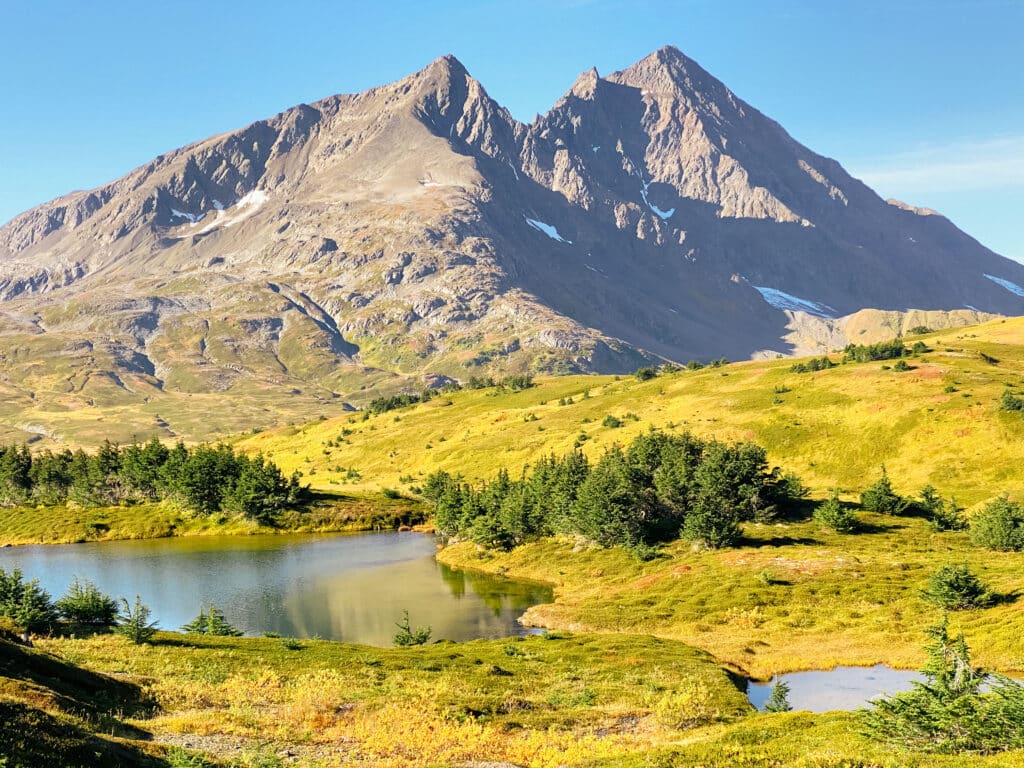
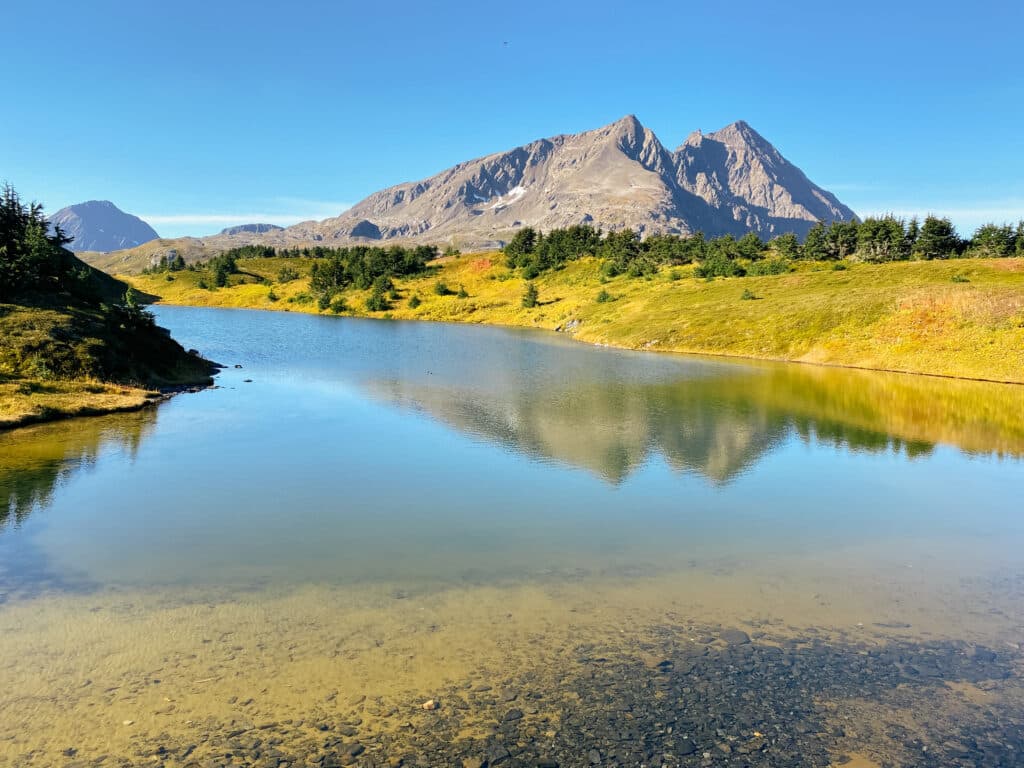
Designated Campsites
The rest of the Primrose Trail is gradual, losing more elevation than it’s gaining.
All along this section of trail, you will see designated campsites and small offshoot trails that lead to more private areas.
When backpacking to Lost Lake, it is recommended that you try to camp at one of these pre-determined sites. If you have reached this point early enough in the day, chances are you will be able to snatch one.
The area around the lake is a rather delicate ecosystem of plant and animal life, so it’s best to minimize the impact that we have on the land wherever possible.
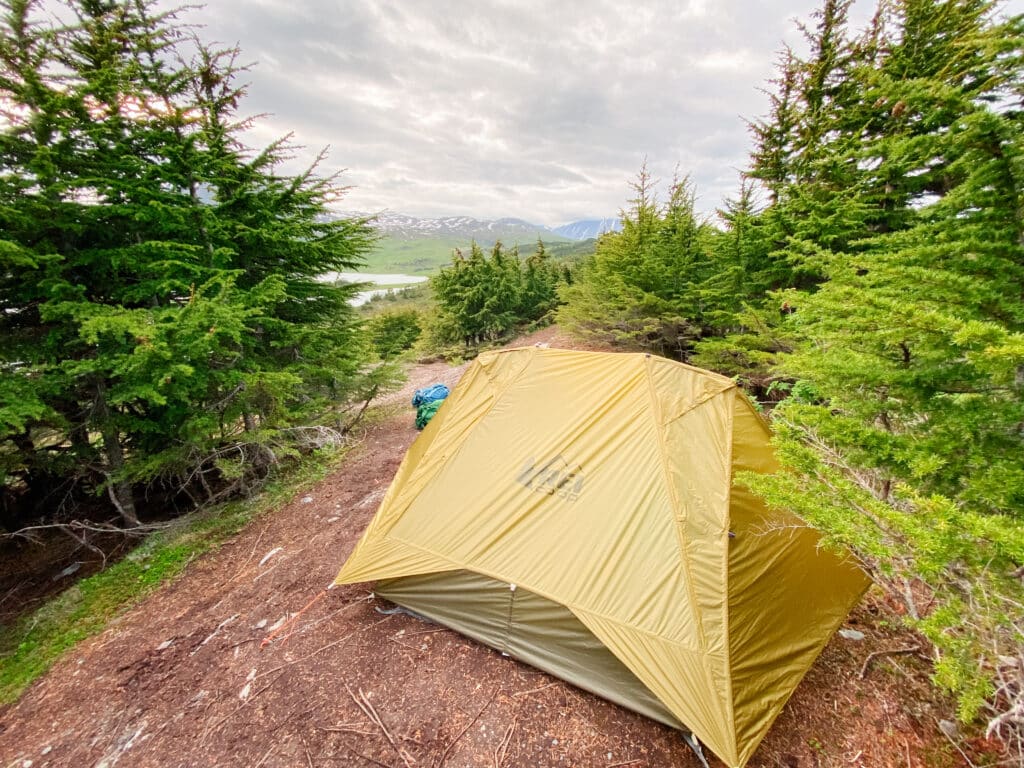
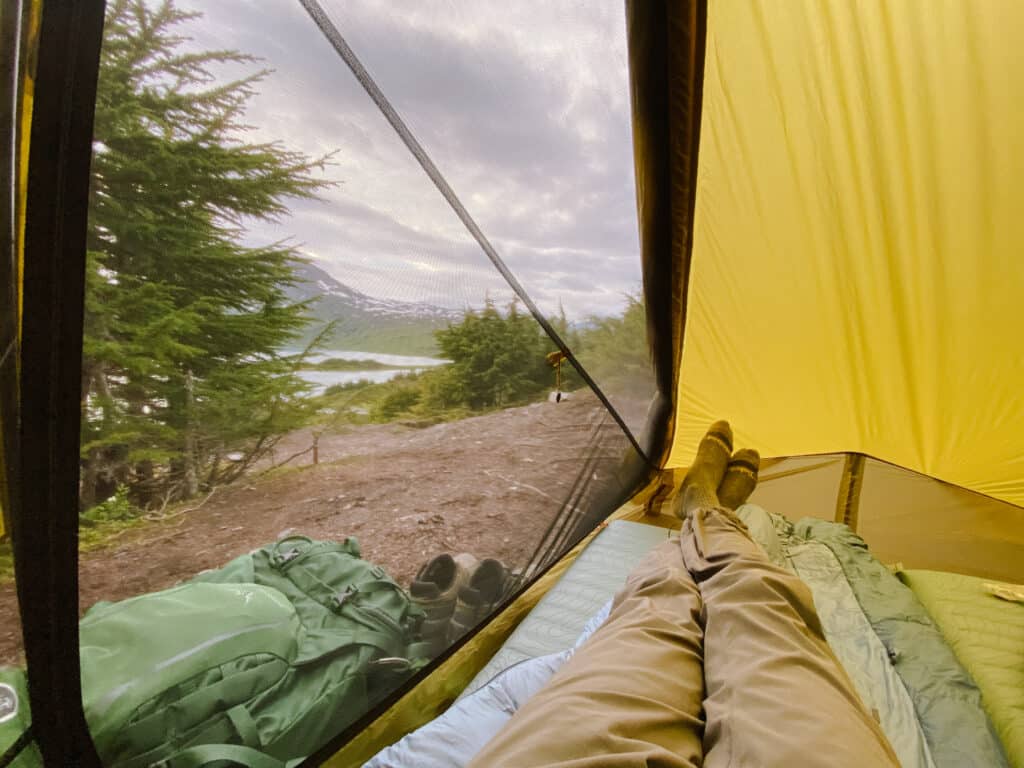
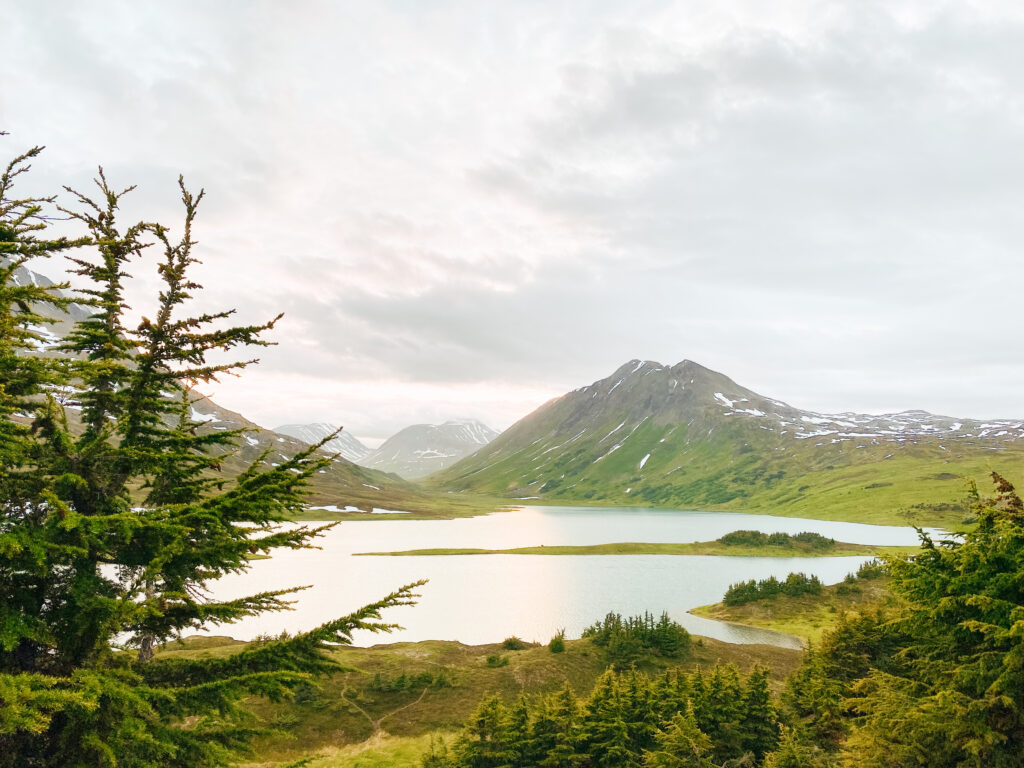
Tips for Hiking the Lost Lake Trail in Seward
Making it a Thru-Hike:
Now that we’ve gone over the differences between the two sides of the Lost Lake Hike, let’s discuss what is arguably the best way to experience this trail.
In order to get the best of both worlds, making this into a thru-hike is a great option. All that is needed to make this feasible is planting one vehicle at the opposite end of the trail from where you started. If you are hiking in a group of friends, park one car at one end and just carpool to the other end.
My favorite trip on this trail was when my girlfriend and I stashed our car at the Lost Lake (Bear Creek) Trailhead and asked some kind friends to drive us to the Primrose Trailhead.
We hiked up Primrose, found an excellent designated camping spot, and took our time hiking down in the morning to our car. If you have the means and ability to do so, you are sure to experience everything this trail offers.
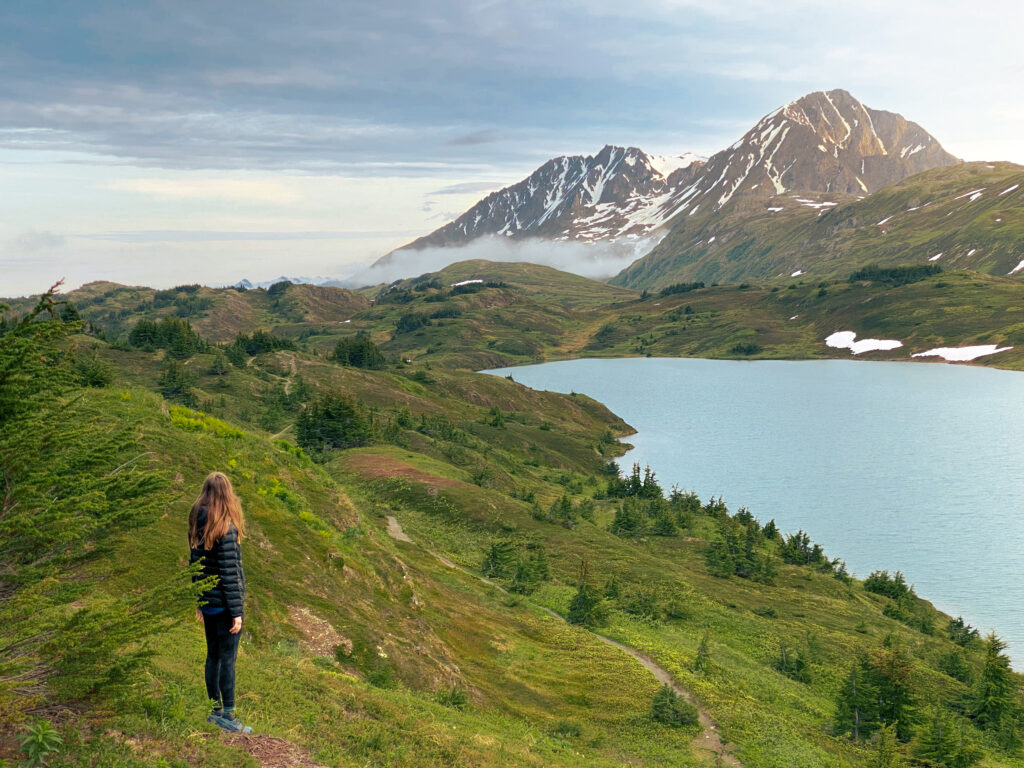
Backpacking:
Assuming you are able to stash a car, my suggestion is to start your trek at the Primrose side.
My reasoning for this is that most of the designated campsites are located on the east side of the lake via the Primrose trail. If you instead start at the Lost Lake Trailhead, you are still able to reach these sites, but might end up hiking quite a bit farther to set up camp.
After a handful of hours on the trail, perhaps with a grumbling stomach, setting up camp as soon as possible is in your best interest.
Please note that camping on the two peninsulas of Lost Lake is prohibited. The Forest Service asks campers to refrain from setting up camp in these areas so that the tundra can grow back.
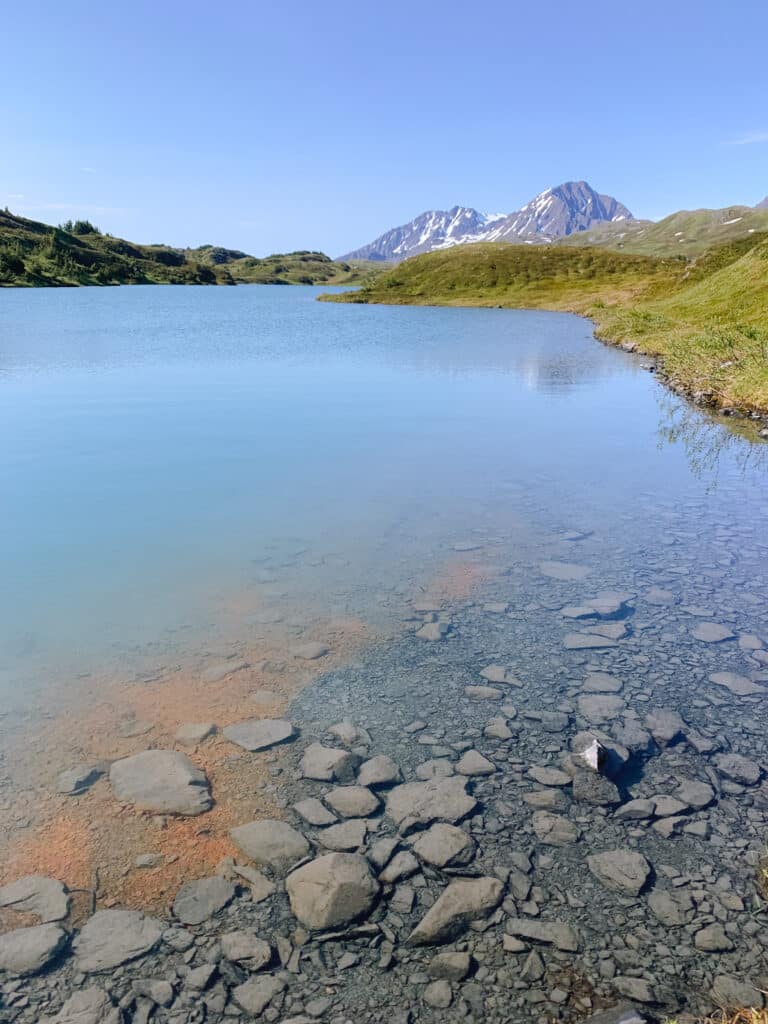
Leave No Trace:
During your entire stay on the trail, be sure to always follow Leave No Trace principles. Have respect for the land you are on, and minimize the impact you have on the ecosystem.
Furthermore, if you spot trash and are able to safely pick it up, please do! Areas such as this thrive when the people who care about it take action.
Keep Wildlife in Mind:
This is Alaska, and Alaska is known for its abundance of wild frontier. When coming into these areas, we are entering the homes of the wildlife that live there.
Whether you’re on the trail or sitting at camp, be aware of bears, moose, and other wildlife that can easily be around any corner. Make sure every person in your party (or every other person) is carrying bear spray. Let the wildlife know you are in the area by making noise as you hike, occasionally hollering out a “Hey, Bear!”.
Store food in a bear-proof container, hung from a tree downwind of your camp by at least 20 yards (if possible).
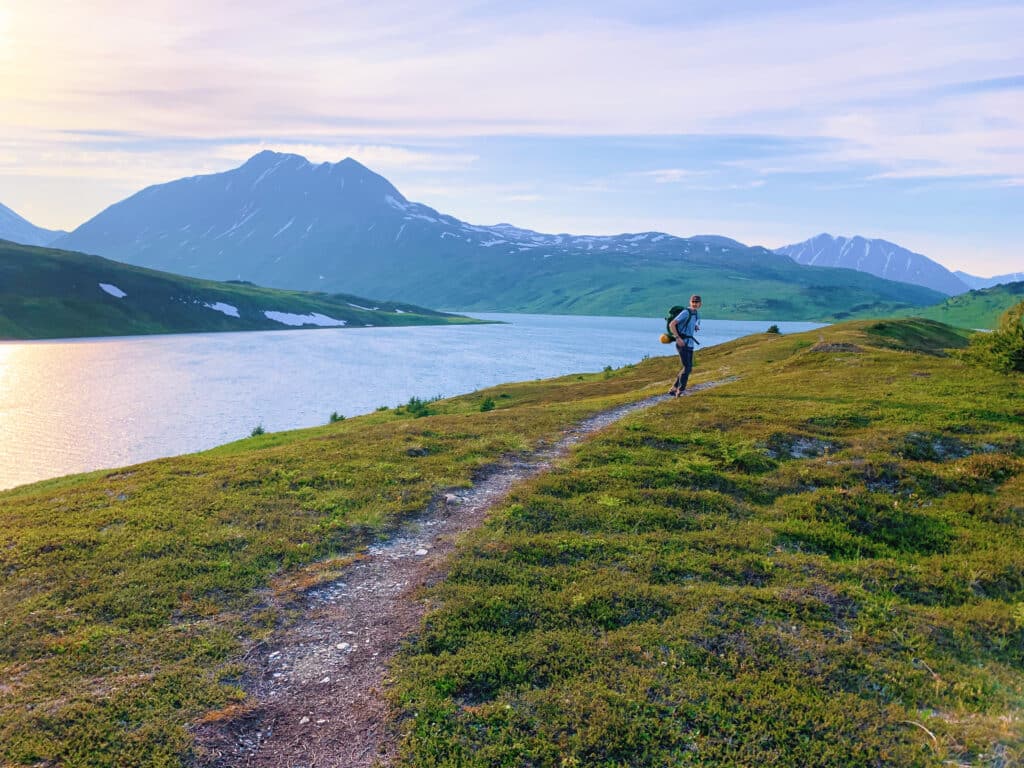
Be Prepared
Whenever heading into the wilderness, it’s important to be prepared. This means being informed about the weather, having a rough itinerary, and letting others know where you will be. Bring ample food and water just in case of emergency, as well as plenty of layers in case things don’t go as planned.
If you’re betting on snatching a designated campsite before they are full, it is better to start hiking up earlier in the day. This is especially true during peak season (June through September).
If you have a campsite already in mind, have a plan ‘B’ just in case it is already occupied.
Bugs? Bugs!
I only have one thing to say about this: bring bug spray.
Now, go find that Lost Lake!
Whether you’re a tourist looking for the best things to do in Seward, or an Alaskan looking to take a trip down south, you can’t go wrong with Lost Lake.
Safe travels and happy trails.
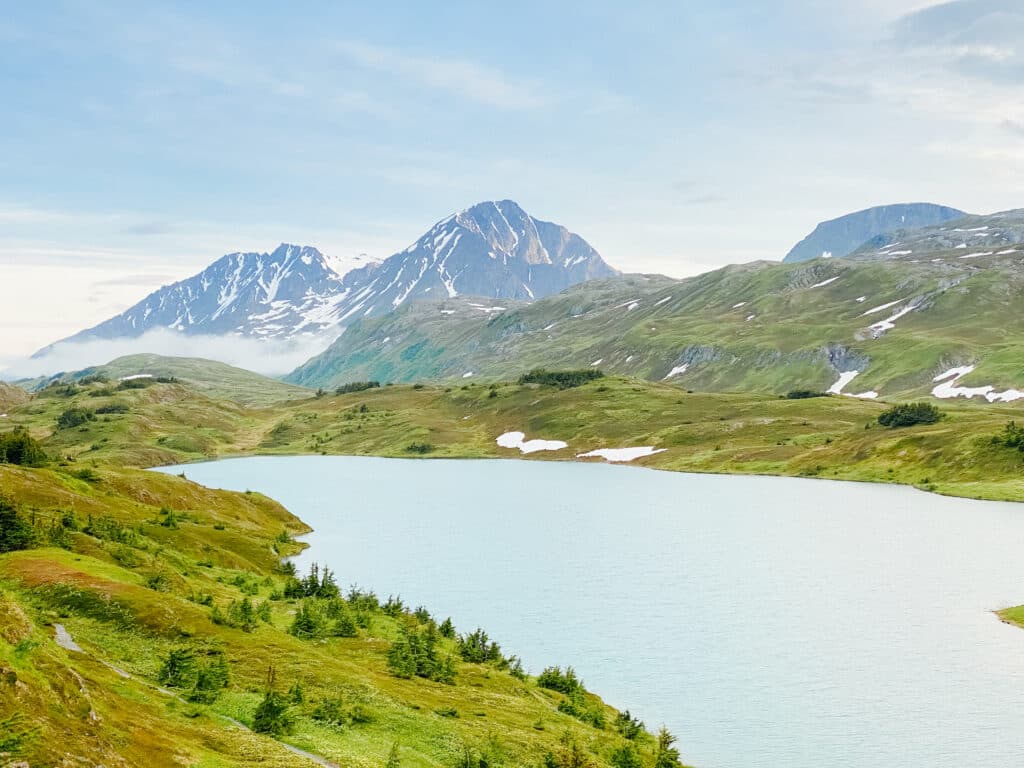
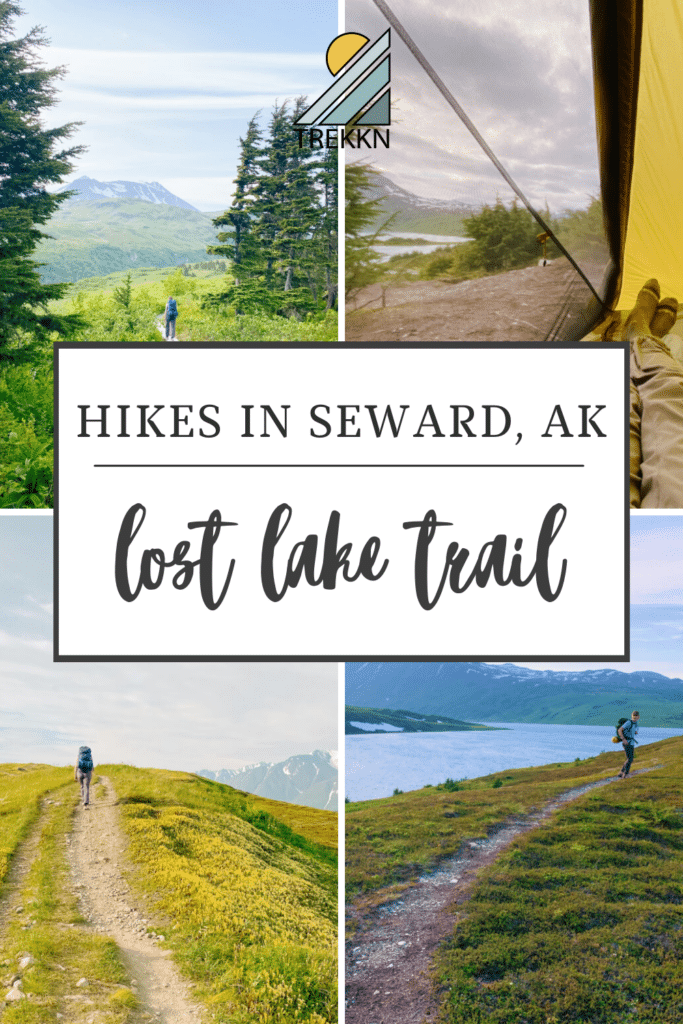
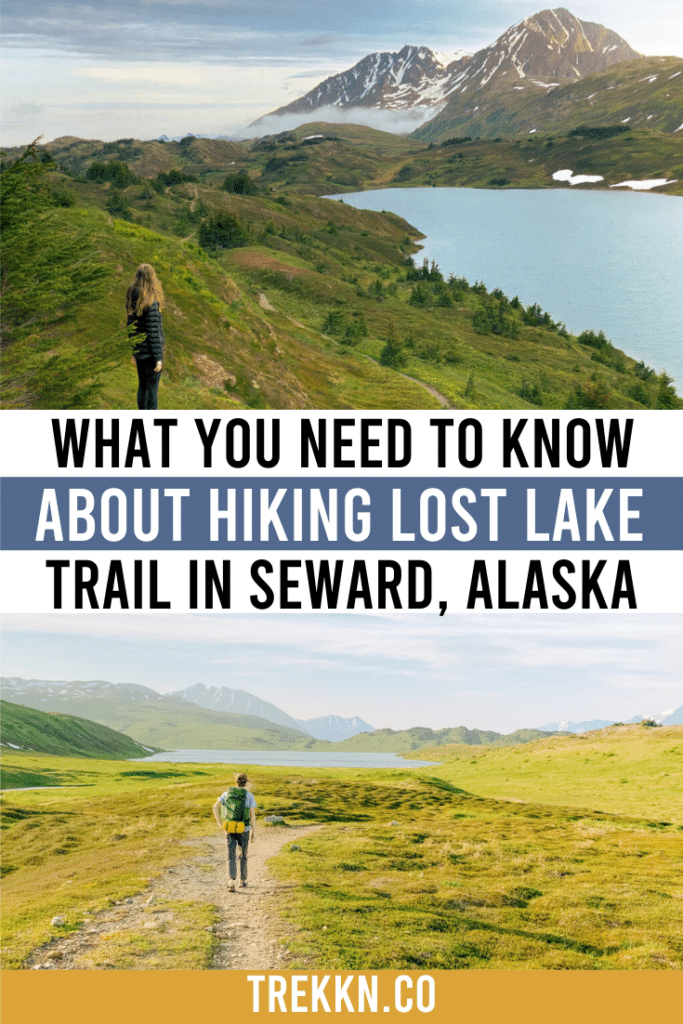
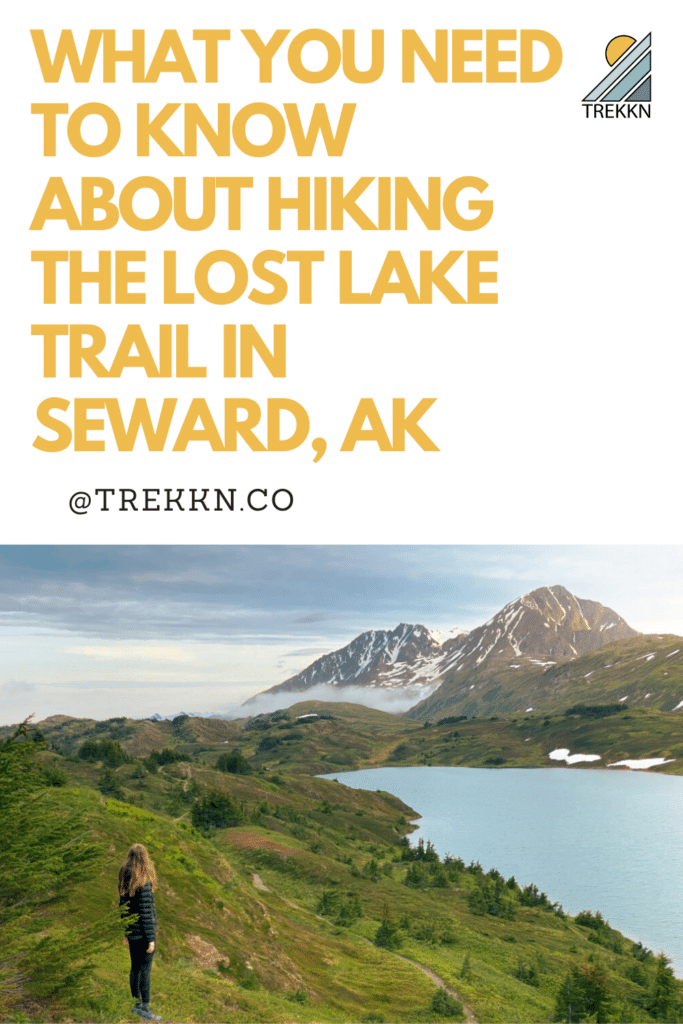
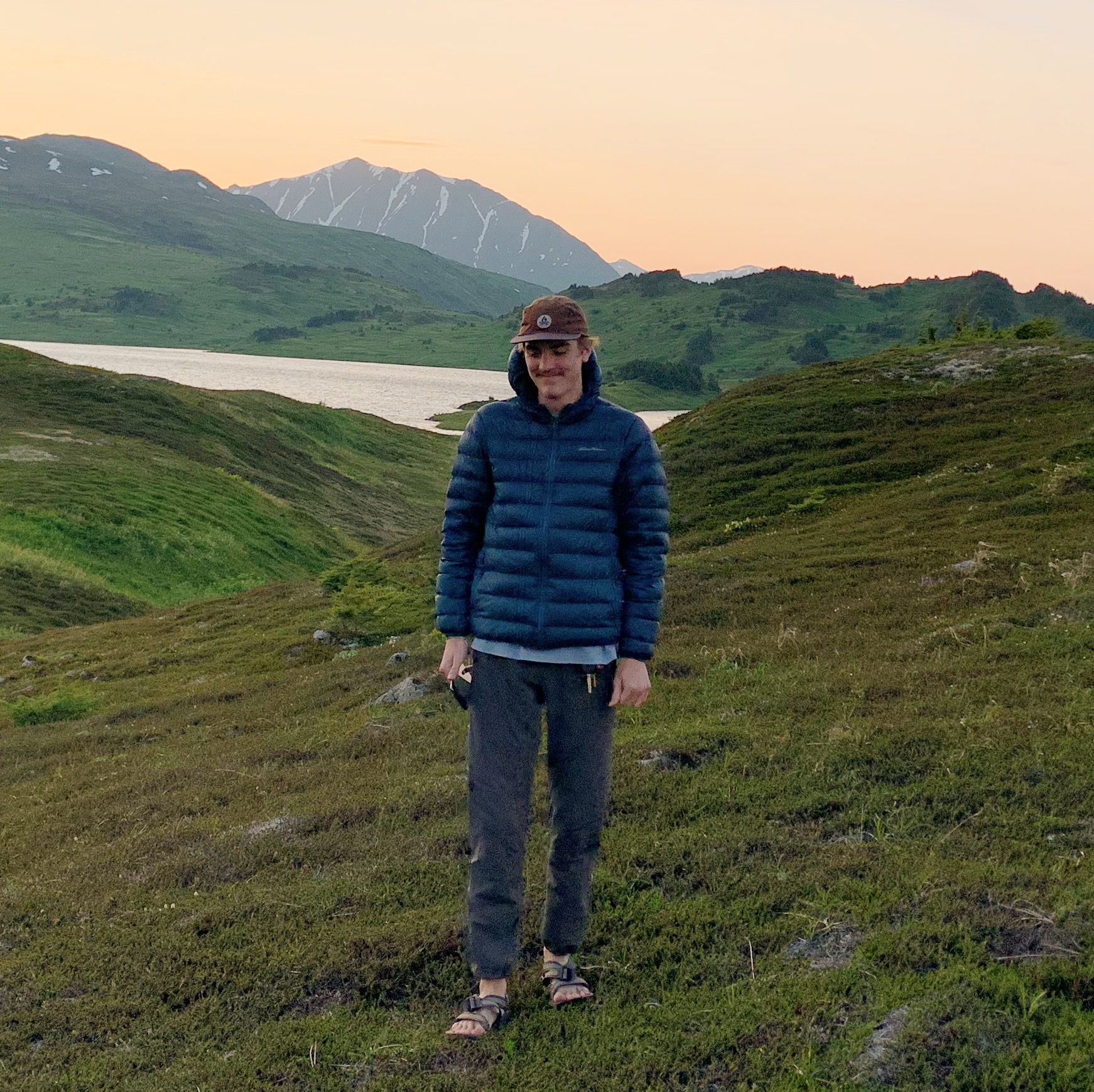
Josiah B gained invaluable experience while living on the road with his family, during which time he felt overcome with the desire to continue exploring. That search landed him in Seward, Alaska, where he currently resides. His love for the outdoors is welcome with open arms in the Last Frontier, and with an endless amount of hiking and backpacking to be done, he’s eager to share the best that Alaska has to offer.



